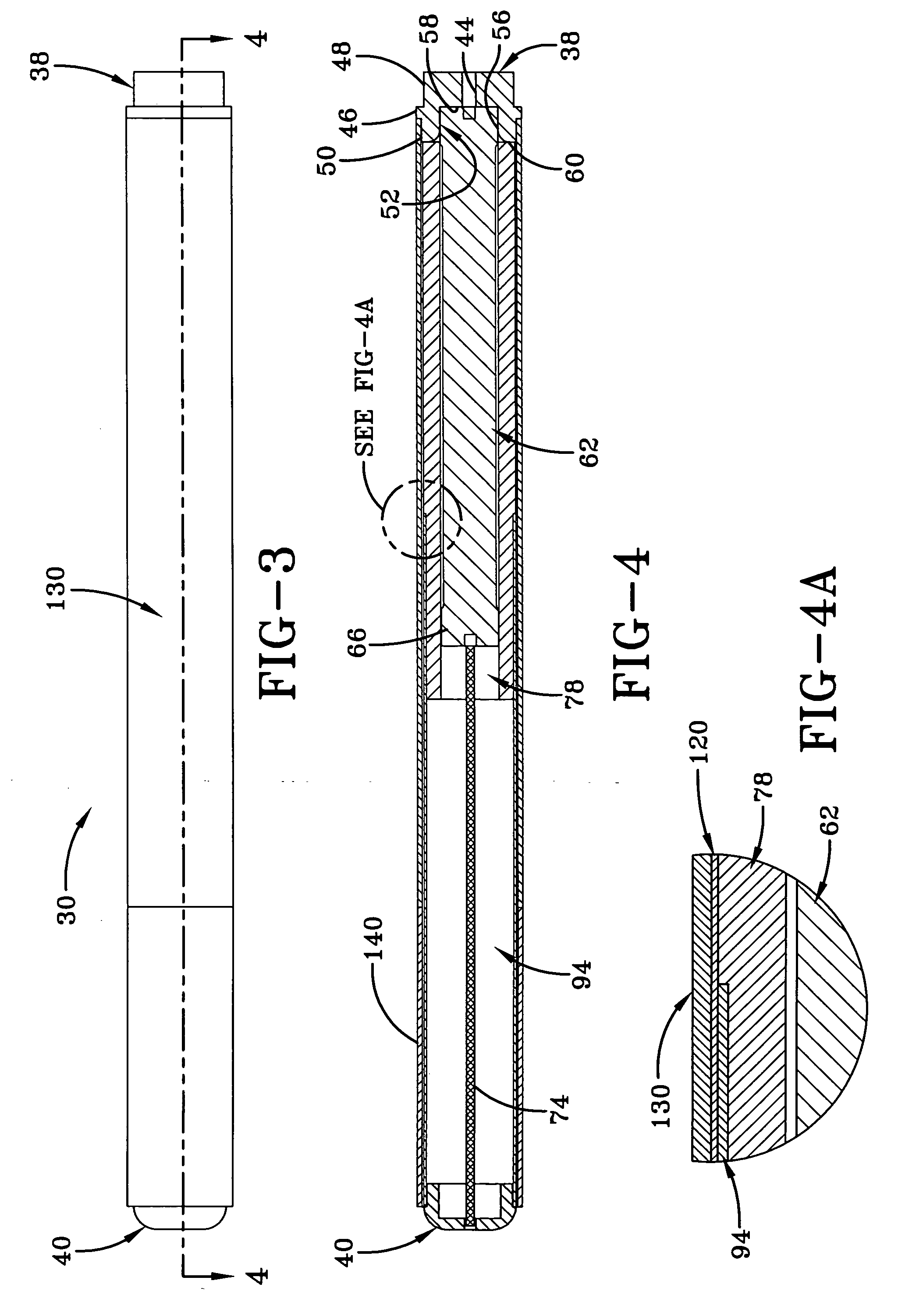Whip antenna high voltage protection device with an integrated electric charge bleed-off system
a protection device and high-voltage protection technology, applied in the direction of resonant antennas, coupling device connections, elongated active elements, etc., can solve the problems of radio equipment damage, harmful electric shock, and the inability to integrate an unintended electric charge dissipation methodology
- Summary
- Abstract
- Description
- Claims
- Application Information
AI Technical Summary
Benefits of technology
Problems solved by technology
Method used
Image
Examples
Embodiment Construction
[0020] Referring now to the drawings and in particular to FIGS. 1 and 2 it can be seen that a whip antenna made in accordance with the concepts of the present invention is designated generally by the numeral 10. The antenna 10 is typically provided in multiple sections. The antenna includes a proximal conductor element 12 which is associated with the base of the antenna or in close proximity thereto and that is connectable to a distal conductor element 14 which is associated with the tip of the antenna. An antenna protection device, designated generally by the numeral 16, is interposed between the elements 12 and 14 for the purpose of protecting the overall operation of the antenna as will become apparent from the detailed description. It will be appreciated that the protection device 16 could be integrally incorporated into the antenna or provided between the elements. The protection device 16 is envisioned to be used in mobile military antenna applications, although it will be app...
PUM
 Login to View More
Login to View More Abstract
Description
Claims
Application Information
 Login to View More
Login to View More - R&D
- Intellectual Property
- Life Sciences
- Materials
- Tech Scout
- Unparalleled Data Quality
- Higher Quality Content
- 60% Fewer Hallucinations
Browse by: Latest US Patents, China's latest patents, Technical Efficacy Thesaurus, Application Domain, Technology Topic, Popular Technical Reports.
© 2025 PatSnap. All rights reserved.Legal|Privacy policy|Modern Slavery Act Transparency Statement|Sitemap|About US| Contact US: help@patsnap.com



